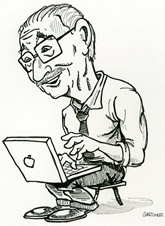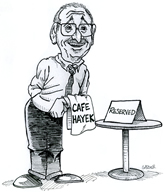[New Jersey’s Democratic governor Phil] Murphy further deterred investment in new gas plants with an executive order requiring that 100% of state power come from “clean energy” by 2035. To achieve his goal, he championed costly offshore wind projects. But developers have cancelled or frozen several of those projects in the past two years because of skyrocketing costs.
The Governor also joined a regional cap-and-trade program requiring fossil-fuel plants to pay for their CO2 emissions. The result of all this: Higher electricity prices, which are hurting Democratic Rep. Mikie Sherrill, who’s running to succeed Mr. Murphy. An Emerson College poll last week shows her tied with Republican Jack Ciattarelli.
In one TV ad, Ms. Sherrill, a Navy veteran, pilots a helicopter and says: “I’m declaring a state of emergency on utility costs using emergency powers to end these rate hikes and drive down your bills.” How so? She says she’ll sue PJM and President Trump “to accelerate the development of cheaper and cleaner energy sources.”
But lawsuits won’t change market realities or create a more reliable electricity supply. Ms. Sherrill promises to streamline permitting for solar and battery projects, but these won’t provide enough power in a state like New Jersey without abundant sunshine year-round. Her plan doesn’t include easing government obstacles to gas power plants or pipelines.
Brian Garst decries “the big government war on airline competition.” A slice:
The industry is intensely competitive. Airlines operate with small profit margins (three percent), and many have folded over the years. Those that remain achieve efficiencies by operating at scale, hence the dominance of big players in the market.
Starting a new airline is extremely capital-intensive, so it’s more likely that any new competition to the big four will have to come from the existing smaller carriers finding ways to team up.
This is where the progressive approach, with its extreme bias against bigness in business, proves counterproductive. AELP recently lashed out, for example, at the Trump administration for greenlighting a business collaboration deal between United Airlines and JetBlue.
For the first time since the financial crisis of 2008, we’re seeing a huge gap between consumer and business spending. While consumption is still robust (up a real 2.6%), business is pulling in its horns, largely due to higher tariffs and the uncertainty of the trade war. This is the first pullback in business spending after four consecutive periods of steady growth. Fixed business investment is holding up, but for how long?
But wait. Isn’t consumer spending the key factor in economic growth? Yahoo Finance states that “consumer spending, which accounts for about two-thirds of U.S. economic activity, is a key bellwether for the outlook of the nation’s economy.”
The idea that consumption is two-thirds of the economy is one of the great myths in economics. It’s based on a faulty reading of national income accounting. Consumer spending represents two-thirds of GDP, but GDP measures only finished or final goods and services. It leaves out the value of the supply chain, which is bigger than GDP itself.
Jeffrey Miron is correct: “Fees for H1‑B visas harm the economy.”
Juliette Sellgren talks with Tawni Hunt Ferrarini and Martina Bacik about teaching economics.
Competent business people do not hire completely inexperienced – or vacuous – individuals into high-level posts. (HT Scott Lincicome)



